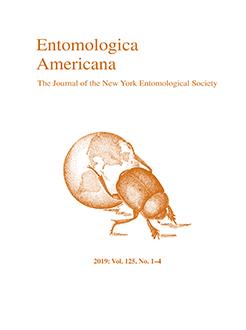This paper describes and illustrates with diagrams and photographs the diapausing larva of the epeoline Thalestria spinosa (Fabricius), a large cleptoparasitic bee, recovered in 1971 from the nest of its host, the South American andrenid bee Oxaea flavescens (Klug). The larva closely resembles that of many Triepeolus (Epeolini), the immature stages of which are better known (Rozen, 1966, 1996). The larva of T. spinosa can be distinguished from those of other known Epeolini by the shape of its short, triangular mandible with a pronounced swelling on its inner surface that projects distally from its base. The lack of strong tentorial structuring as well as internal ridges on the cranium has long suggested that epeolines have a weak head exoskeletons. However, after careful study of T. spinosa and review of other larval Epeolini, the author now suggests that the extensive integumental thickening of the cranium and the broad connections of the frontal area of the head with the rear part, though less noticeable, obviates the need of a strong tentorium and internal head ridges.
How to translate text using browser tools
6 November 2019
THE MATURE LARVA OF THE SOUTH AMERICAN CLEPTOPARASITIC BEE THALESTRIA SPINOSA (FABRICIUS) (APIDAE: NOMADINAE: EPEOLINI)
Jerome G. Rozen Jr
ACCESS THE FULL ARTICLE
cleptoparasitic bee
Epeolini
postdefecating larva
Thalestria spinosa





